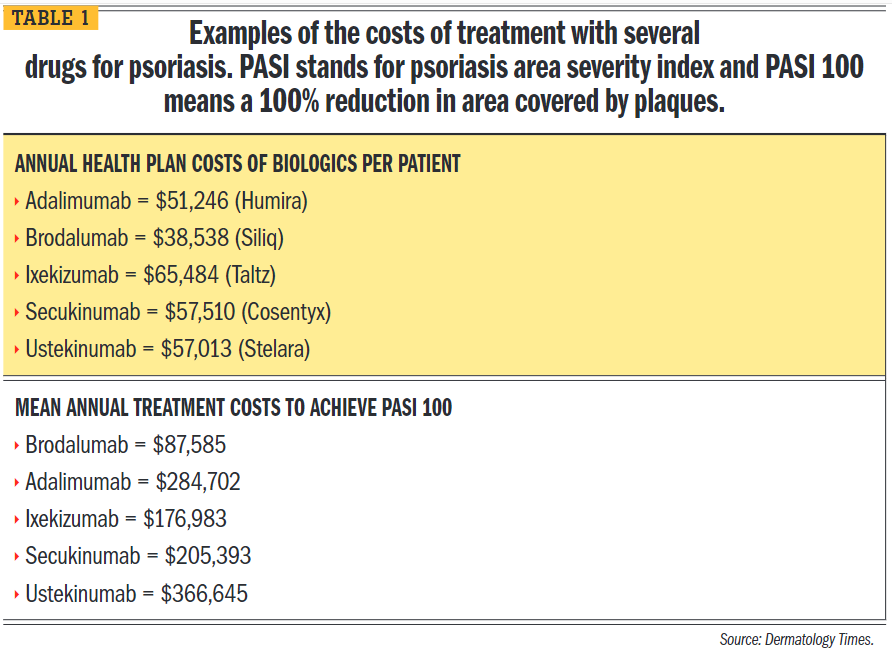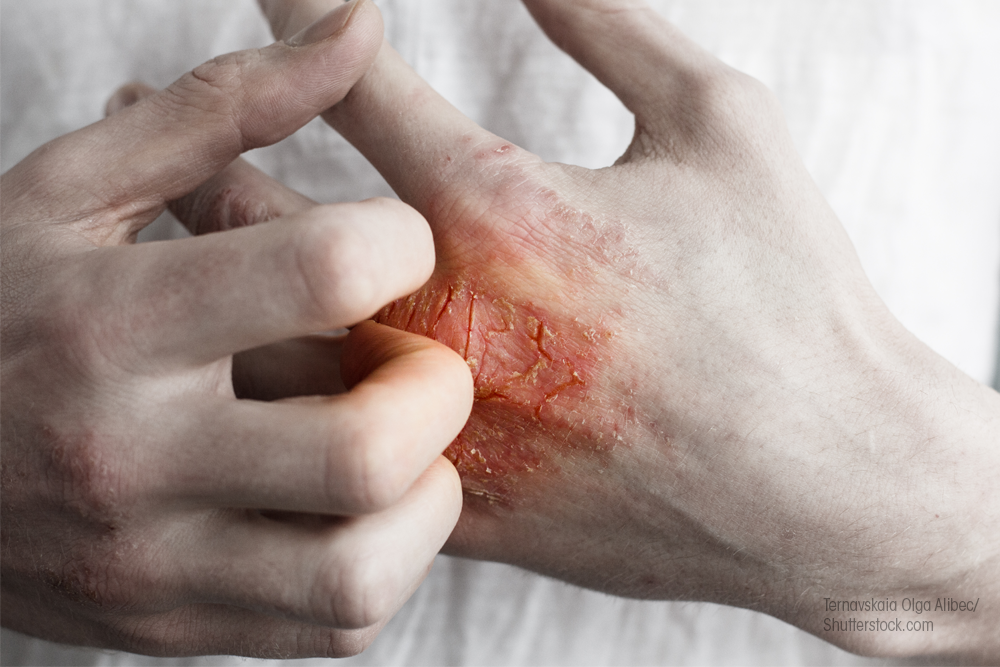What Do Pharmacists Have to Do with Dermatology?
Skin problems often require complex (and expensive) drugs, so how can you help?
Table 1, Click to Expand


No one gets through life without the occasional rash, sunburn, or patch of itchy, dry skin. Less fortunate individuals suffer with chronic severe skin conditions, such as psoriasis, eczema, acne, or rosacea. Effective prescription treatments can give greater relief and in some cases, result in complete remission, but these drugs may carry large price tags. Specialty pharmacies are helping patients with dermatology issues get their medications without breaking the bank.
Many patients with severe skin disorders have gone from general practitioners to dermatologists or even to a series of dermatologists because their conditions are more extensive or are recalcitrant. Take psoriasis for example. These patients may have already been treated with the usual first-line treatments and either did not respond or did not respond well enough.
Related article: The Good, The Bad and The Ugly of Drug Prices
“They’ve been through other dermatologists, now they’re coming to a larger academic medical center because they have more going on. So a lot of times they need the biologic treatments,” says Audrey Rutledge, PharmD, BCACP, a MARC-prior authorizations pharmacist at the University of Colorado Hospital in Aurora. MARC stands for Medication Access and Renewal Center, a program that helps patients obtain access high-priced specialty medications through third-party payers. “Our department specializes in getting access to high-cost medication.”
The current healthcare climate has facilitated the emergence of these specialty pharmacies, says Adam Friedman, MD, FAAD, associate professor of dermatology at George Washington School of Medicine and Health Sciences in Washington, DC. Getting prior approval for those drugs, or getting a third-party payer to reconsider a denial, takes times and effort. With a specialty pharmacy, “you have people who are more knowledgeable about navigating through the various impediments that insurance has put into place to get these types of drugs covered.”
Friedman compares the process to a dance. “It’s going back and forth with paperwork, explanations, written documentation. If you know the dance, then you know how to win the competition, so to speak.” Specialty pharmacists know the system and it takes a lot of the burden off the physician, he explains. “It’s a wonderful symbiosis. It really makes our lives so much easier. And it fast tracks the patients to getting their medications.”
Standing Up for Patients
Many autoimmune skin conditions are effectively treated with pricy biologic medication (See Table 1). But it isn’t just about biologics, Friedman says. Nonbiologic drugs, “whether it be for common diseases like rosacea, acne, eczema, psoriasis, there are a lot of new formulations which insurances will reject,” he says. Insurance companies frequently want prescribers to choose older generic formulations that may not work as well for a given patient.
Rutledge and her MARC colleagues have seen insurance companies deny newer formulations of topical steroids for patients who don’t respond to other versions, such as first-line topical steroids or topical calcineurin inhibitors. “Based on wherever a skin condition is, the absorption rates can change,” she says, which can interfere with the effectiveness of older formulations. A foam formulation for a drug like clobetasol may not be the version preferred on the formulary and getting that product for a patient can take the intercession of a specialty pharmacist, she notes. Clobetasol foam can cost between $110 and $300 per 50g can.
Allison Vidimos, MD, RPh, praises the help that specialty pharmacists have offered her patients who have metastatic basal cell carcinoma, for whom she prescribes vismodegib (Erivedge, Genentech). Vidimos, who worked as a pharmacist while she was in medical school, is chair of dermatology at the Cleveland Clinic. Vismodegib can cost $8,000 to $9,000 per month, she says.
“It is a specialty medication that our specialty pharmacy has done an incredible job in getting it for the patients in a timely fashion, and getting it covered either completely or almost completely.”
In some cases, a third-party payer may not consider the condition an urgent matter or view it as merely a cosmetic condition. Rutledge says. She notes that her department has helped some patients with alopecia obtain tofacitinib citrate (Xeljanz, Pfizer), despite it being off-label for that condition.
Related article: Top 8 New Drugs to Watch for 2021
However, more insurers are starting to understand the quality-of-life problems created by chronic skin conditions. “Even something like acne can be extraordinarily debilitating and affect someone’s professional and social choices,” Friedman says. “We are moving in the right direction, but there is a big focus on proving that skin disease has a tremendous burden on the general population.”
Once the MARC team is involved, very few patients decide against using a medication because of its cost, says Rutledge. She describes what she does as “almost like a form of case management where we’re doing so much personal outreach to the patient.” With that outreach, they can also determine if the patient is adhering to their medications or needs to be switched to another drug, she says.
Up next: The role of community pharmacists
Role of Community Pharmacists
Community pharmacists may be the first healthcare provider patients with a rash might go to for a recommendation regarding an OTC remedy. But they should also be prepared for patients who may present with more serious conditions. Rutledge used to work in community pharmacy and often had patients ask about skin problems. “They would do it frequently enough that I would look up information ... at least for my own benefit,” she says. “Most of the time, you end up referring them to their provider because it’s something that you know needs to be assessed.”
She has used Uptodate.com, an online subscription clinical decision resource, since it has a lot of photos of various skin conditions. “But I think following any education opportunities from ACPE-accredited bodies, trying to get some CE in there, is a good idea.”
Popular on the Web: 10 Reasons Pharmacists Have It Tougher Than Anyone Else
Rutledge and Vidimos stressed that pharmacists who are asked to recommend OTC products for a skin condition should tell patients to see a physician if the problem does not go away in one or two weeks. “You’re really not going to hurt someone with a lot of the over-the-counter stuff,” Friedman says, “because most of these types of things that someone would probably show to a pharmacist should improve with the right treatment in about a week or two.”
Friedman also suggests that pharmacists advise someone with a rash to take a photo of it before they start using any OTC product. This creates a record of what the rash looked like before any treatment, and it can be shown to a physician later on, if needed.
Pharmacists can also recommend that patients with a skin issue go to an urgent care center, Vidimos says. “A lot of times it would merit sending them to a facility like that where they can be looked at quickly and diagnosed and sent on their way.”
